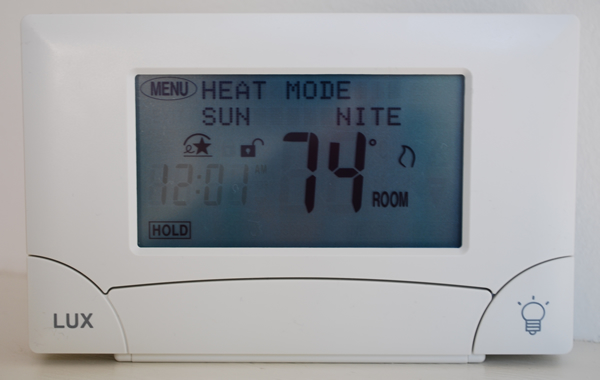Heating & Cooling Your Home Efficiently
Heating and cooling costs tend to be the largest single component of your utility bill. Instead of leaving your heat or air conditioning on full blast when you’re not home, install a programmable thermostat for your system.
Investing in a programmable thermostat can save you energy and money, since it reduces the usage of your heating and cooling systems.
Programmable thermostats now have features such as voice and phone programming, vacation options, and indicators alerting you that it’s time to change air filters or if part of your system is malfunctioning. You can visit the Energy Star website for programmable thermostat options and to see what system is appropriate for your heating and AC system.

Additional Resources:
American Council for an Energy-Efficient Economy: More on Thermostats
More Information on Keeping a Cool and Energy-Efficient Home
According to the American Council for an Energy-Efficient Economy, air-conditioning, while used in over ¾ of US homes, is a major cost on one’s utility bill and contributes to a lot of greenhouse gas emissions– warming the planet as you cool your house down. However, there are still ways to stay cool while reducing your reliance on AC and lowering costs on your energy bill.
ACEEE’s Cool Tips to reduce your AC usage:
- Insulate and “tighten” your house— reduce the amount of heat that enters, and the amount of cool air that exits. See later sections for D.I.Y. tips on how to do this.
- Replace your appliances with energy efficient models. If you’re looking to purchase a new refrigerator, dishwasher, dryer, consider purchasing a more energy efficient model. Older, or less efficient models, can emit heat and contribute to a warmer house. For more information on appliances, see the “Dial It Back a Notch” section.
- Reflect solar radiation with exterior painting and roofing choices. Choose lighter color paints or dark paints which are made to conduct less heat. Choose roofing materials rated for “solar reflectance.” Even though it may not seem like a lot, these choices can reduce your cooling needs by 10-15%.
- Shade and improve windows. See section: “Follow the Sun.”
- Use fans to increase air movement. Ceiling fans, window fans, or even a “whole-house” fan can dramatically decrease temperatures and discomfort during summer months. Look for models with the Energy Star rating to minimize energy usage.
Additional Resources:
American Council for an Energy-Efficient Economy: More information about types of cooling systems
American Council for an Energy-Efficient Economy: Advice on replacing your cooling system
